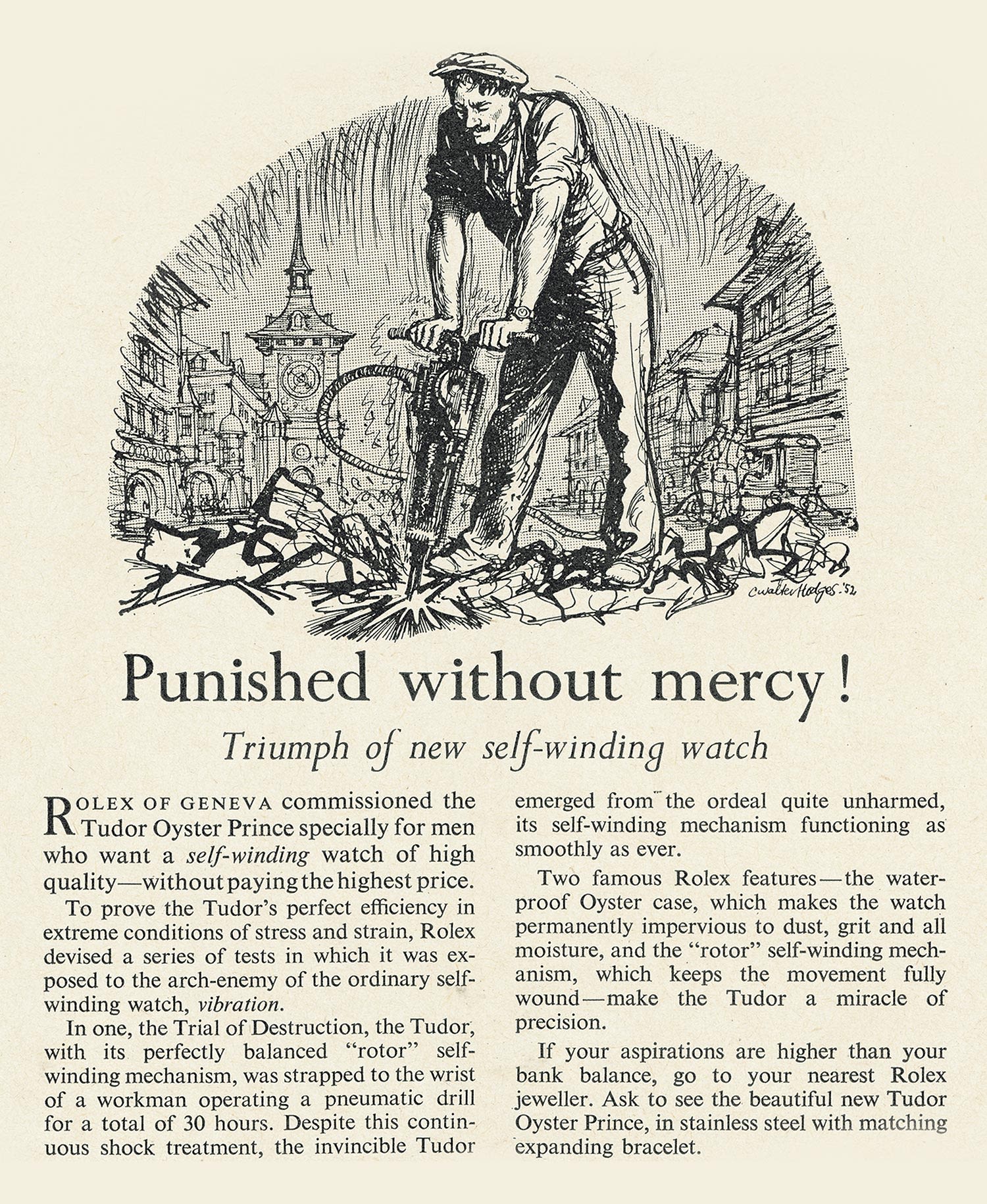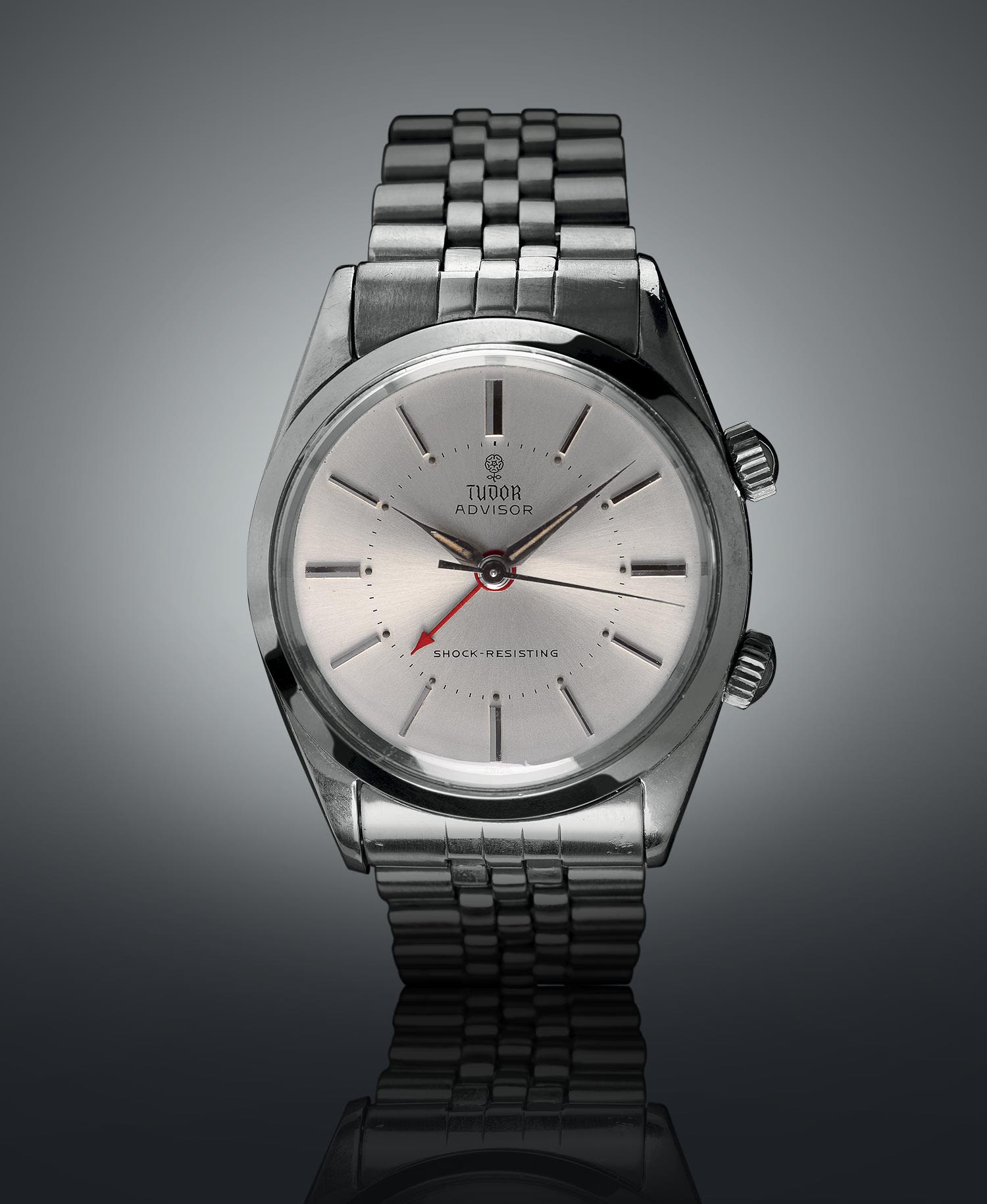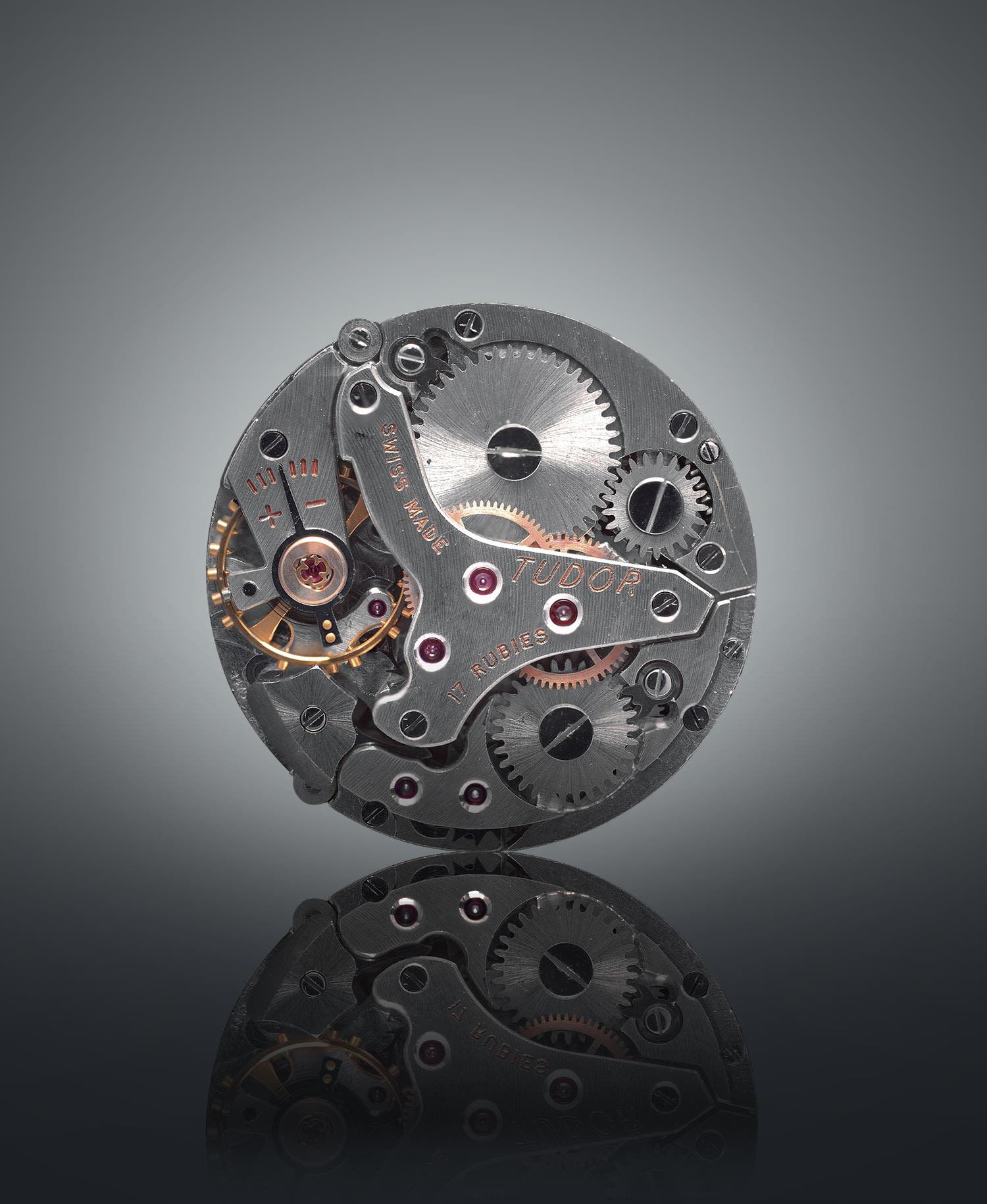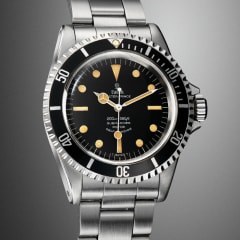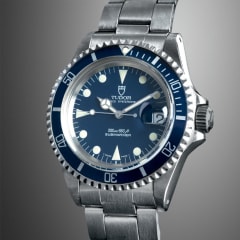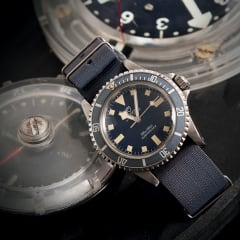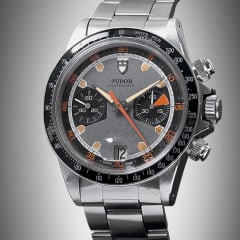birth of the tudor oyster princethe origins: FROM 1952 TO 1957
In 1952, the TUDOR Oyster Prince was launched, accompanied by an advertising campaign that was particularly original and striking for the era. This campaign was not limited, as was usual practice, to showing and describing the product. Instead it emphasised the qualities of strength, reliability and precision in a very detailed text, as well as through illustrations showing men at work in extreme conditions wearing a TUDOR on their wrist. It was a less conventional choice than depicting sporting activities. These strong images, associated with the product’s credibility, contributed to giving TUDOR watches a style and personality reflecting the ideas of modernity and reliability – greatly surpassing the individual contexts in which they were shown.
TUDOR OYSTER PRINCE
Hans Wilsdorf used this new campaign to link the Rolex and TUDOR brands, sanctioning this new product in which he was investing his credibility:
I have decided that the TUDOR Prince deserves to share with Rolex two advantages I would allow no other watch to use – the famous and unique waterproof Oyster case and the original self-winding Perpetual ’rotor’ mechanism. All TUDOR Oyster Princes will have these two exceptional features, previously exclusive to Rolex. This indicates, I think, the measure of our faith in the new watch. I am proud to give my personal endorsement.
British North Greenland Expedition
In 1952, 26 TUDOR Oyster Princes would be included in the British scientific expedition to Greenland organised by the Royal Navy. The brand thus proved the strength, reliability and precision of its products.
PROOF OF ROBUSTNESS
In 1953, Rolex launched a campaign based on robustness tests on the TUDOR Oyster Prince and its endurance in particularly difficult conditions:
-watch worn by a coal miner during 252 hours of excavation by hand
-watch subjected to the vibrations of a pneumatic drill for 30 hours
-watch worn by a stonecutter for three months
-watch worn for a month while riveting metal girders in building construction
-watch worn by a motorbike racer over a distance of 1,000 miles.
Emphasis was placed on the great strength of the watches, their precision, their efficient winding and their waterproofness even in extreme conditions.
TUDOR OYSTER PRINCE “TUXEDO” 7950
TUDOR “Tuxedo” is the name given by collectors to the Oyster Prince watches sporting a two-colour dial with large hour markers like the type that equips the reference 7950 illustrated here. Its central decoration in enamelled paint is divided into four sectors. It is surrounded by a metal insert with guilloche decorations. This black and white design recalls the characteristic colours of a tuxedo, hence the name.
Powered by the Calibre 390 with copper-coloured brass finishings, this reference 7950 features a 34 mm stainless steel case with a slightly streamlined middle as well as a domed screw-down case back inscribed “Montres TUDOR S.A. Geneva Switzerland Patented”. Its reference number and serial number are engraved on the case back at 6 o’clock. The lugs of this reference were sometimes stylised depending on the year of Manufacture.
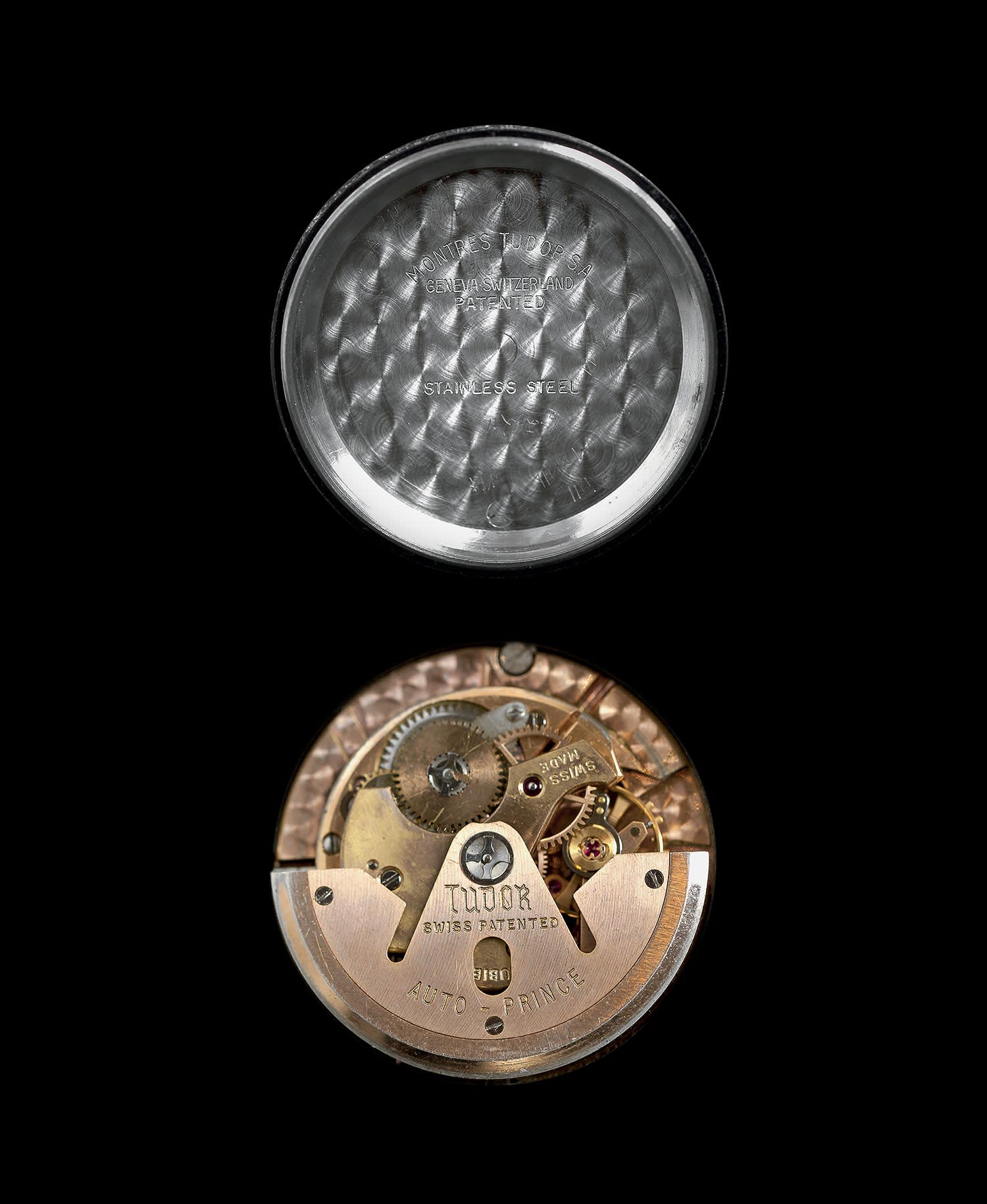
tudor advisor: the first alarm watch
The TUDOR Advisor alarm watch is one of the brand’s most atypical models, the only one in its history to offer an alarm function. From 1957 to 1977 three different versions of the TUDOR Advisor were produced, two with an Oyster-type case, references 7926 and 1537, and a last one with a new dedicated case, reference 10050. In 2011, this legendary alarm watch was relaunched under reference 79620T, entirely redesigned and with a diameter larger by 8 mm (42 mm as opposed to the previous 34 mm).
TUDOR ADVISOR 7926
A unique and extremely rare model, reference 7926, of which an example with a “Jubilee” bracelet is pictured here, was manufactured from 1957 to 1968. Only a few thousand pieces were produced. The Oyster-type case was modified on TUDOR Advisor reference 7926 to optimise the vibrations of their alarm function. Two crowns, at 2 and 4 o’clock, enabled the operation of the alarm and time functions respectively. Its movement was the famous manually-wound A.S. 1475 (A. Schild).
FIRST EXTRA-THIN WATCH WITH A WATERPROOF case
The thinnest watch ever made by TUDOR, only 6 mm thick, is a very rare model, produced in small number for only a few years, from 1957 to 1963. In the late 1950s, it went down in watchmaking history as being the thinnest waterproof TUDOR wristwatch. Today it remains one of the TUDOR timepieces most sought-after by collectors.
TUDOR OYSTERTHIN 7960
The TUDOR Oysterthin presented here dates from 1961. It features an extra-thin waterproof steel case 34 mm in diameter and 6 mm thick, excluding the crystal. Its charcoal-grey dial is punctuated with recessed baton hour markers and luminescent dots. It has baton hands and is powered by the extra-thin Calibre 2402 — 3.6 mm thick, 23.7 mm in diameter — easily recognisable by its three rubies screwed into the top plate. It beats at a frequency of 18,000 beats per hour.

